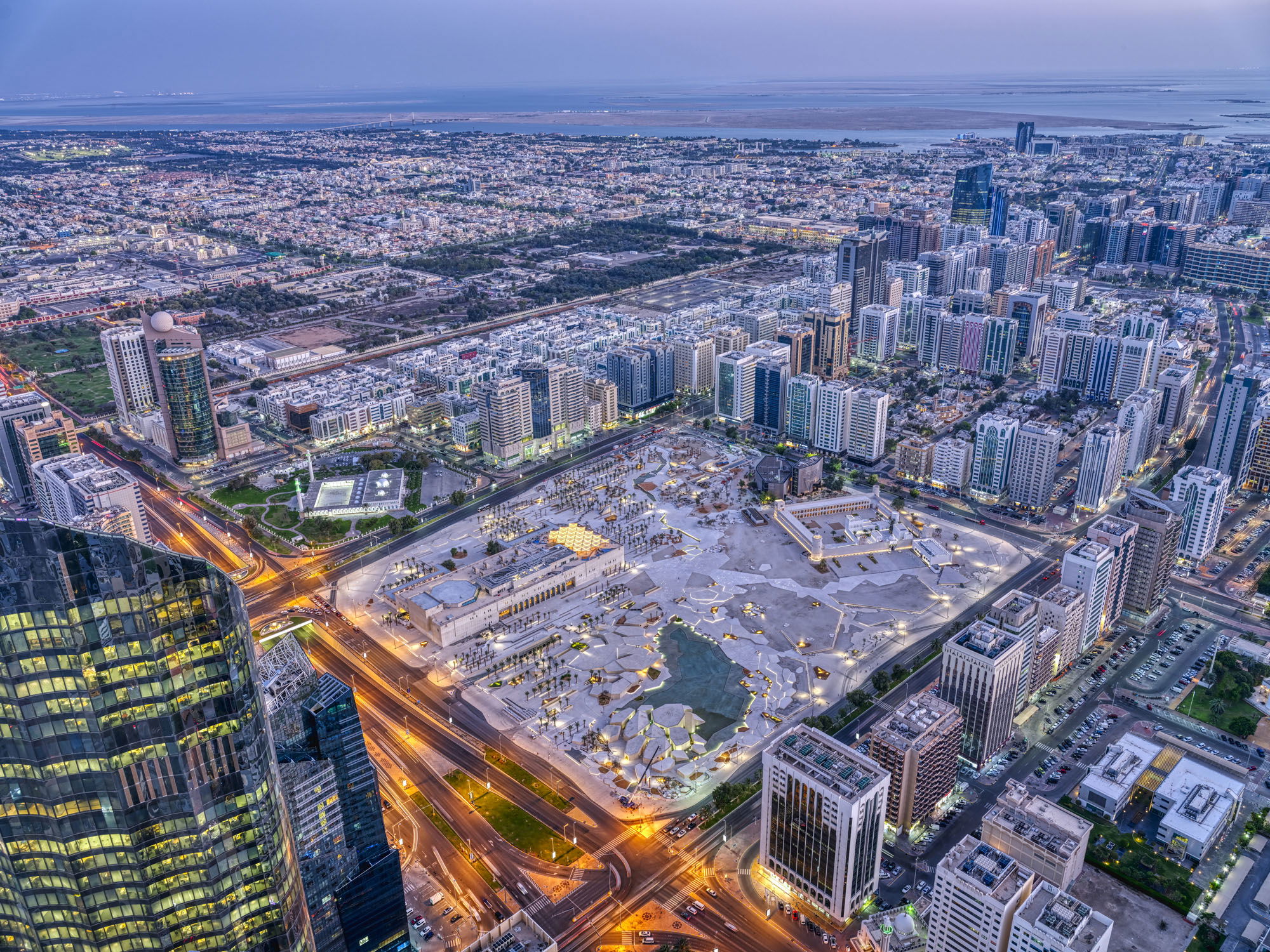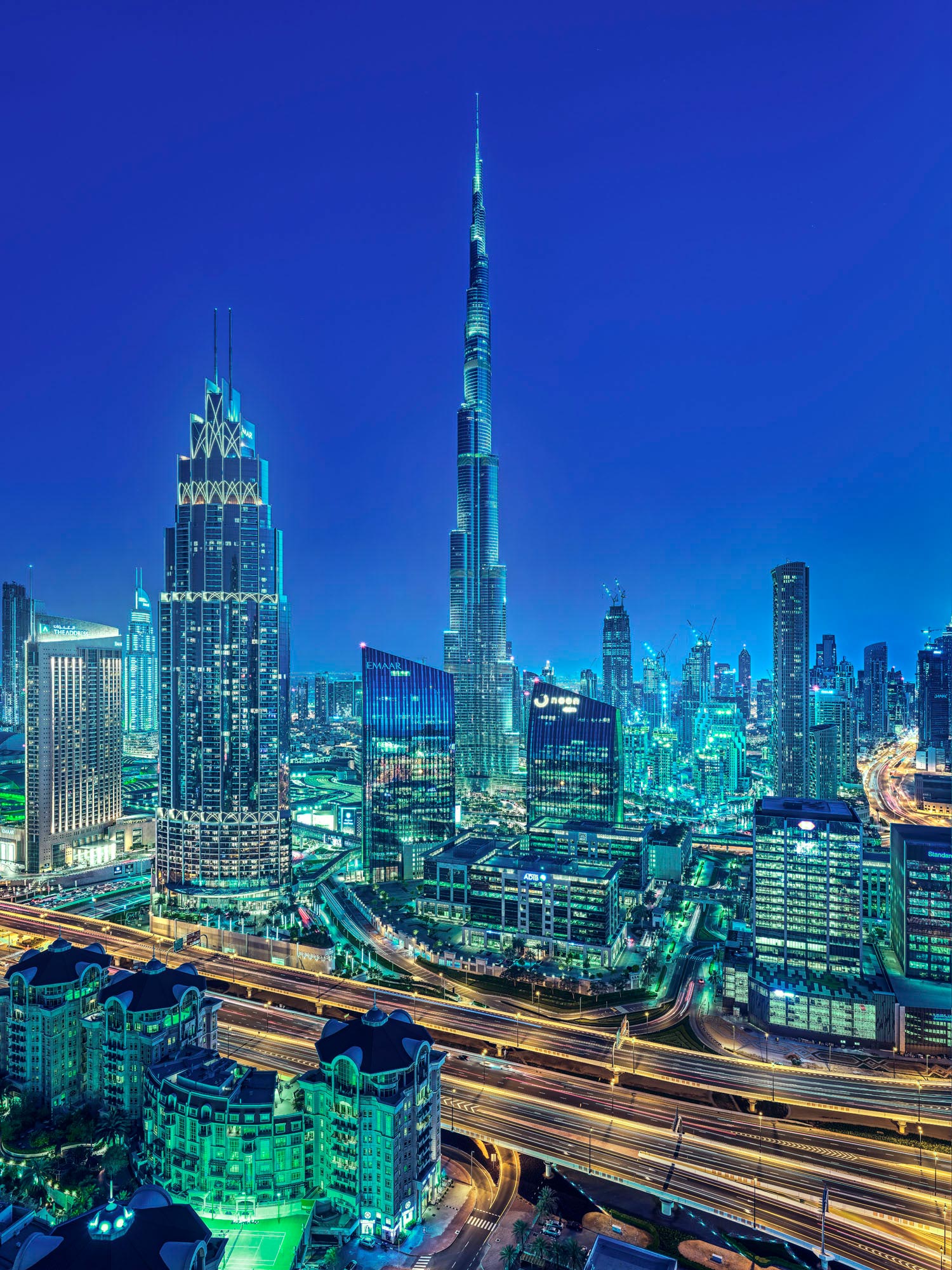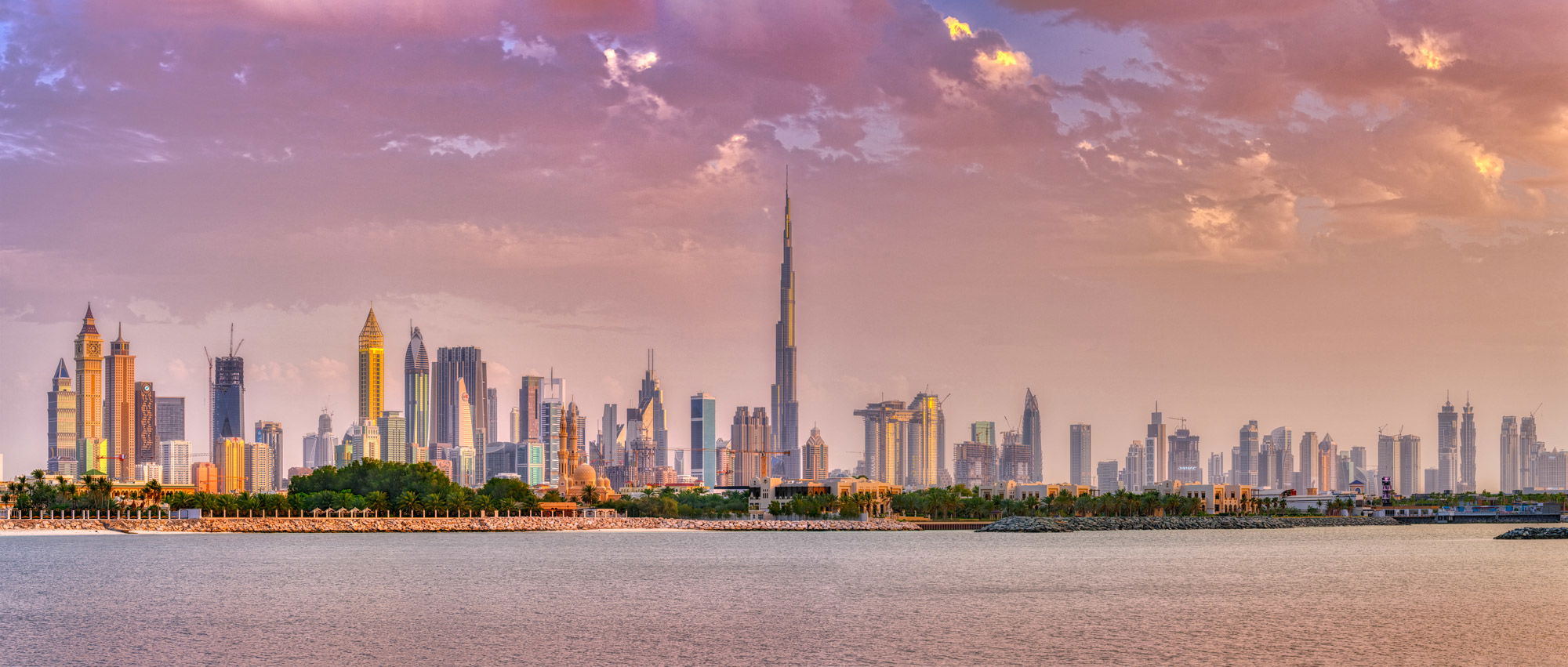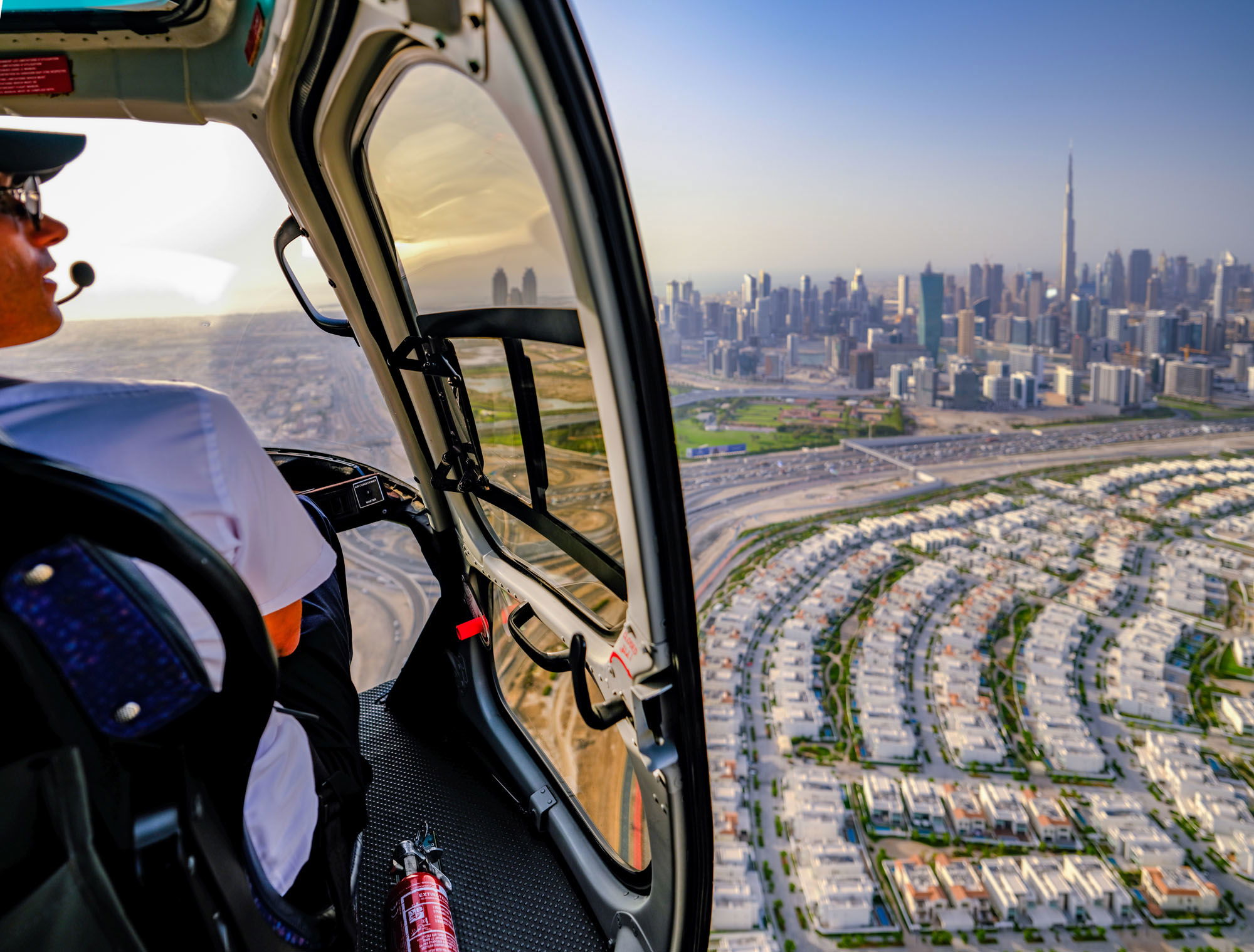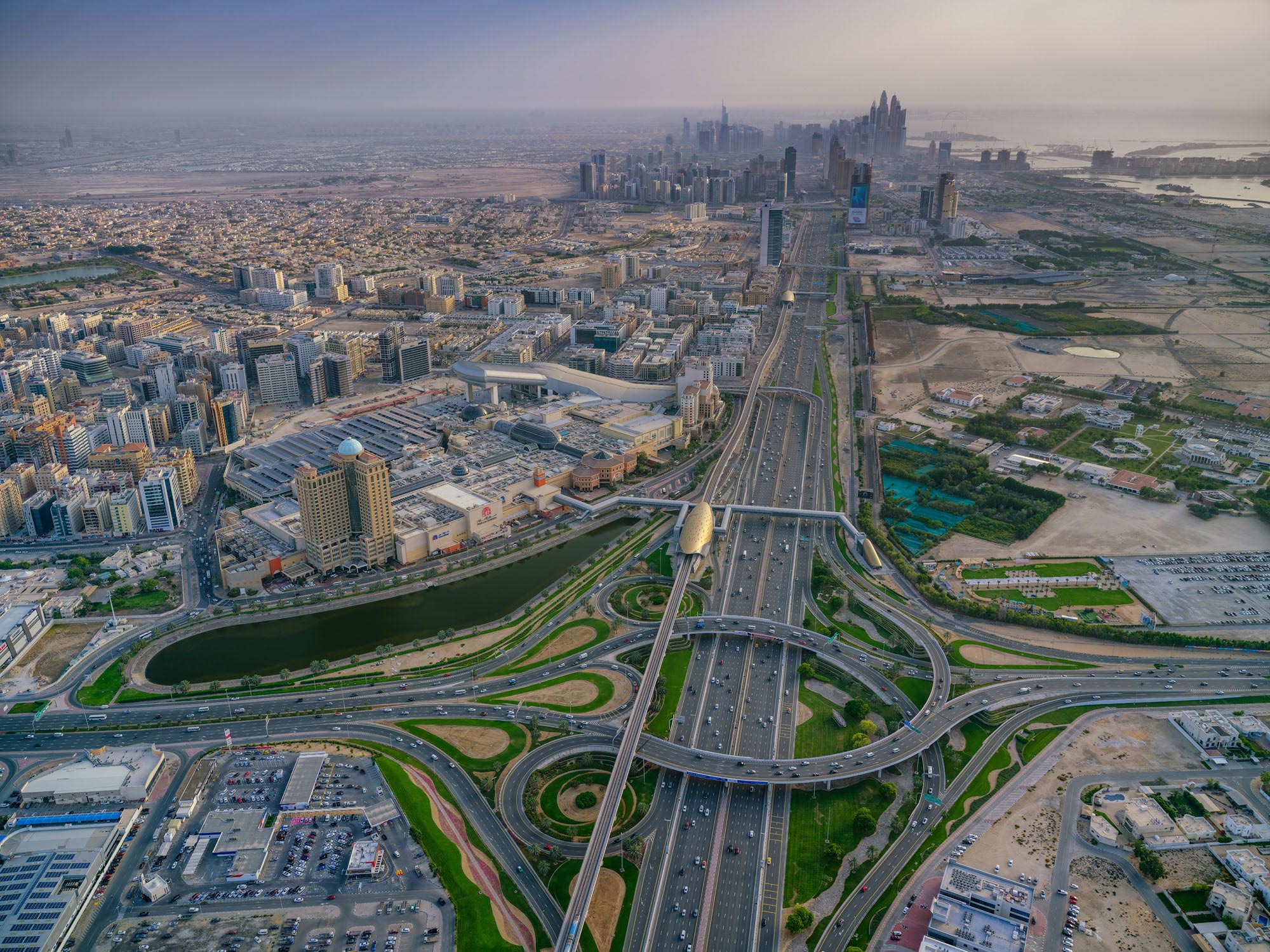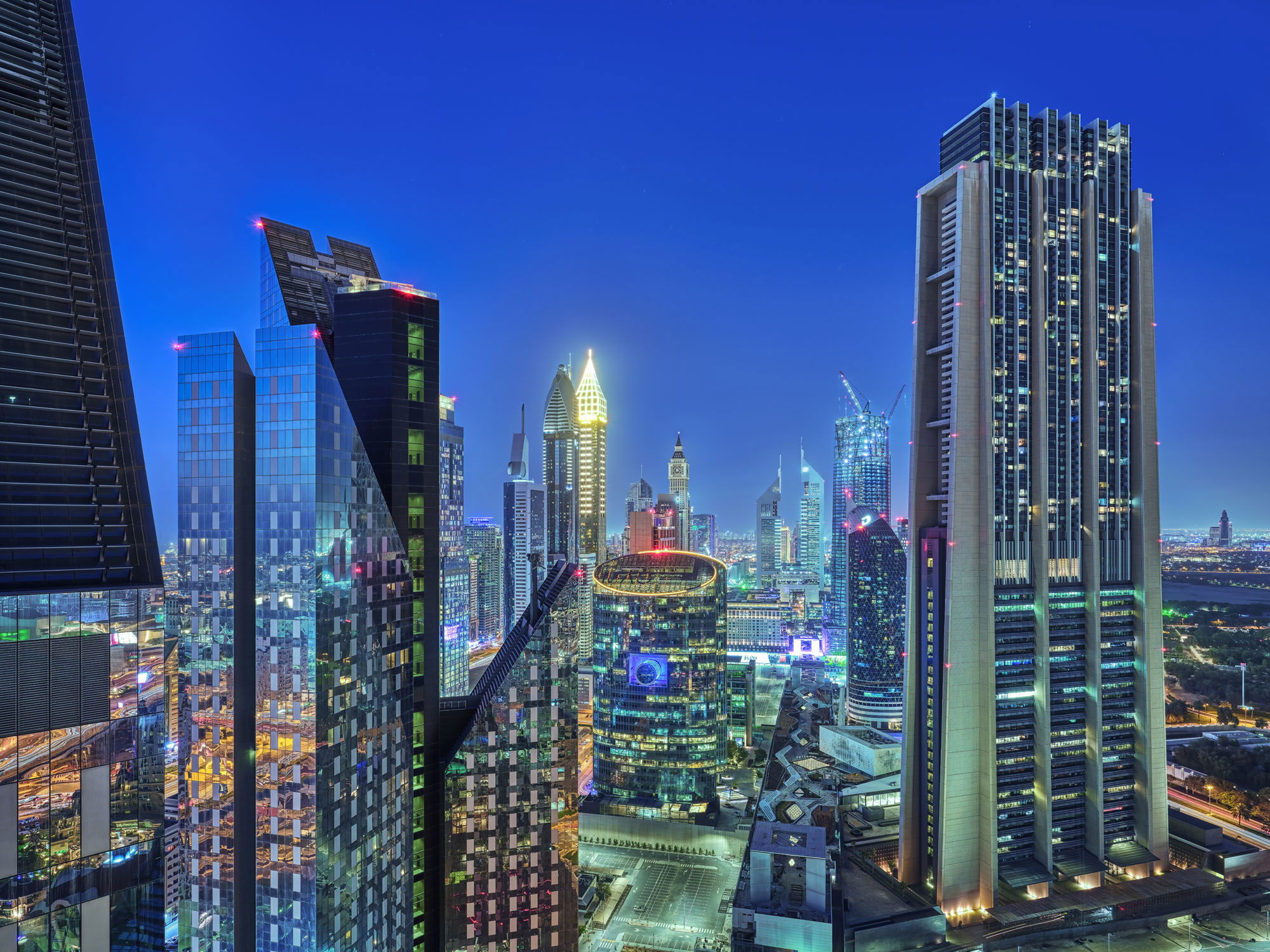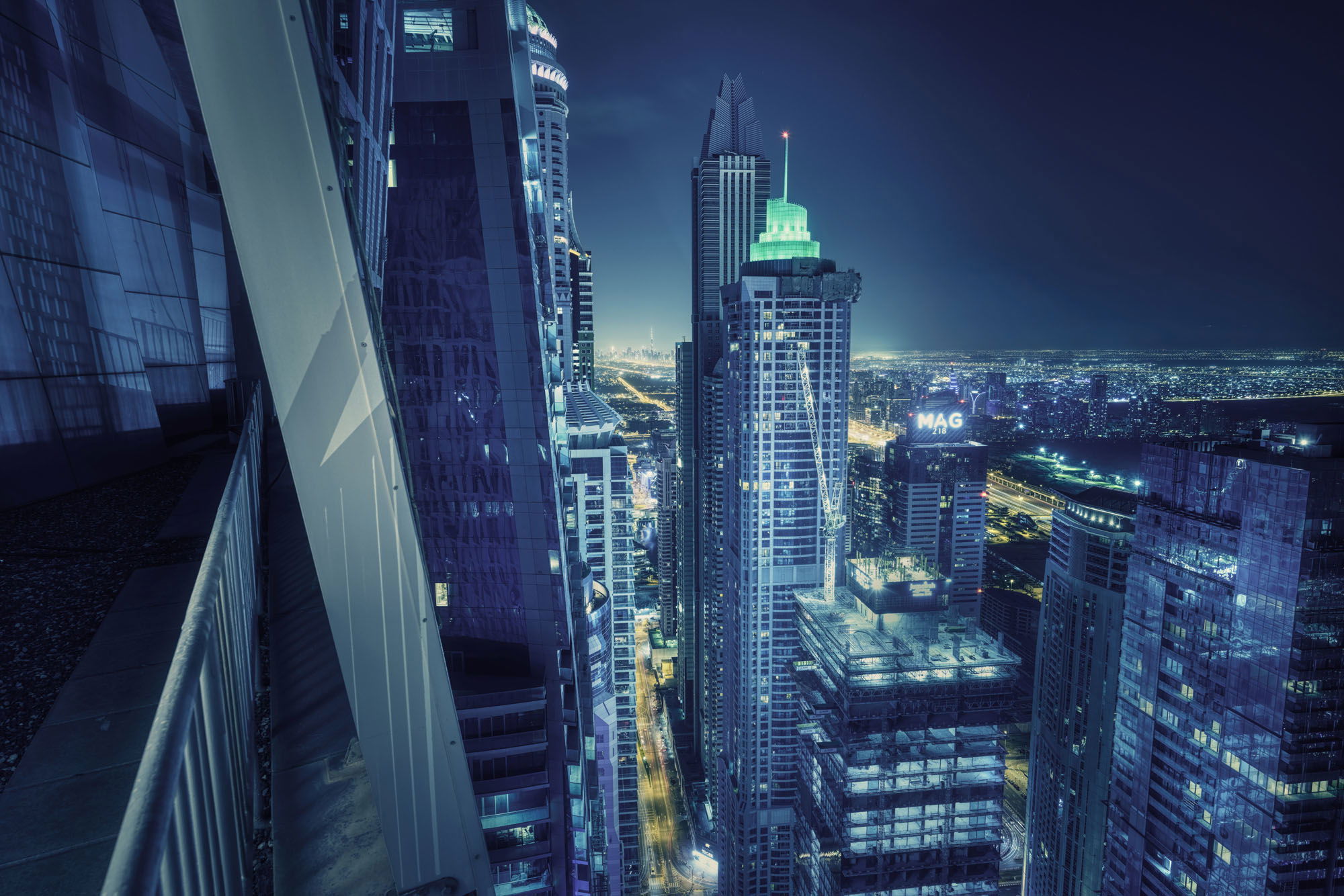Beno Saradzic is an award-winning architectural photographer whose background in design visualization, 3D CGI visual effects, and animation taught him the foundations for creating remarkable imagery. Beno’s visual arts skills go hand in hand with his passion for classic cinema, science fiction, traditional fine arts, and music to create photography that he describes as cinematic, poetic, ethereal, and hyperrealistic. Beno took the FUJIFILM GFX 100 to the skylines of two of the most famous cities in the United Arab Emirates: Dubai and Abu Dhabi.
Beno’s years creating ultra-realistic renderings of city architecture paved the way for his move into photography. “It taught me about all the things that make an image a beautiful one to look at. Basically, I learned photography without even owning a camera,” says Beno, who fell in love with photography as a way to convey his own personal interpretation of a scene.
“I was never interested in capturing the ‘literal’ light. It would never be enough for me to simply reproduce what my camera captured,” he explains. “I strive to infuse my work with subtleties, which define me as a person and express my own individuality.”
For this project, Beno took the GFX 100 somewhere he knew he could capture the cities in all their glory. “I took it to my ‘natural habitat’, the place where I like to be the most; the skyscraper rooftops,” he tells us. “Dubai and Abu Dhabi are full of very tall buildings with rooftops ranging from 50 to 100 floors. The views from the rooftops are spectacular and you can find a huge variety of compositions suitable for ultra-wide, all the way up to telephoto lenses.”
Beno chose the rooftops as the ultimate test for the GFX 100’s 102-megapixel back-side illuminated (BSI) sensor. “I wanted to see how well this camera would resolve the details on the façade of a skyscraper miles away,” he says. “I was curious how clean the images would look at night, captured with high ISO, and how the camera handled the light with challenging contrasts,” he explains. “I also needed to know how fast its internal processing is, given the very high-resolution images it captures.”
Beno is used to carrying a large amount of gear with him on shoots, so the first thing that struck him about the GFX 100 was its portable design. “You’d expect a large format camera to be big, bulky, heavy, and cumbersome,” says Beno. “A conventional larger format camera belongs to a temperature-controlled studio environment in a permanent setup, but have a quick glance at the GFX 100 and you will know immediately it’s a ‘take-me-with-you’ camera,” he continues, adding that he particularly enjoyed the camera’s handling.
“Despite its enormous sensor and high-end specs, it’s surprisingly compact and light. It fits perfectly into my hands, just like a high-end DSLR with a battery grip would. The buttons and dials have an intuitive and logical layout, and the ergonomics are well thought out. This is obviously a camera that was designed by photographers, for photographers.”
It wasn’t just the look and feel of the camera that impressed Beno; the GFX 100’s performance in challenging conditions also struck a chord. “I thought the battery life was great. After a four-hour time-lapse shoot (about 2,500 shots), I lost about 50% of the power reserve on the first battery, while the second one remained at 100%,” he reveals.
“Camera customization was a breeze and the first time I used the camera, I was ready to shoot in minutes. I saved some presets, which allowed me to power-up the camera with a ten-second shutter release delay, AE bracket preferences, and my preferred WB and ISO settings. This saved a lot of time during my two-week shoot.”
He goes on to talk about the camera’s focusing capabilities and how they added to his experiences. “Focus peaking with a selectable color and intensity was an absolute delight. I was able to get pin-sharp shots during the day or night in a split second,” says Beno, highlighting how this is complemented by the GFX 100’s 5.76 million dot viewfinder. “The EVF is fantastic. Extremely sharp, bright, and vibrant. The best I’ve seen to date.”
A portion of the shoot was conducted from a helicopter flying above Downtown Dubai. In such conditions, you need a camera you can rely on to be quick enough to get the shot whenever you need it. The GFX 100 delivered on a number of different fronts due to its advanced functionality, something that didn’t go unnoticed by Beno.
“The camera is light enough to hold in your hands for 40 to 60 minutes without a problem. I haven’t lost a single shot due to a misfire or lost focus, and although most shots were taken at higher ISOs, noise is virtually invisible in the images,” he reveals, adding that the In-Body Image Stabilization (IBIS) was the cherry on top. “With IBIS turned on you could see the picture literally hanging still in front of you. Remarkable! It added a few very valuable stops of light to the relatively dark shoot,” he enthuses. “I wouldn’t hesitate to recommend this camera to serious aerial shooters.”
Beno also used the GFX 100 to capture a time-lapse of the city and was stunned by the results. “I have never seen cityscapes rendered with such unapologetic, brutal sharpness, precisely rendered color tones, and extreme clarity of details. This camera resolves a surreal amount of information hidden in the shadows and highlights. It inspired me to revisit and reshoot my favorite locations and places I’ve shot a dozen times with a lesser camera.”
Although he only spent a short time with the camera, Beno tells us he has come away from the experience with a whole new outlook. “Looking at images captured by the GFX 100 makes you think just what else is possible in this wonderful era of digital photography,” he says.
“It’s quite scary to think how fast this camera spoiled me. I can’t imagine going back to 50 megapixels or less than that. The camera is small, light, ergonomic, configurable and user-friendly. I’ve no idea how Fujifilm managed to pack its massive sensor in such a tiny body, inclusive of an IBIS system, which works wonderfully. And it blows my mind to see how fast the X-Processor 4 handles these ridiculously large files.”
“I think it’s a category-defining camera, especially at that price point,” he adds. “Fujifilm has created a proper market disrupter here. It’s a killer camera.”
Beno Saradzic is a compensated FUJIFILM X-Photographer. To see more of Beno’s work, visit his website.
Learn more about the FUJIFILM GFX 100 and read the full specifications here, or contact your nearest FUJIFILM Authorized Dealer.



